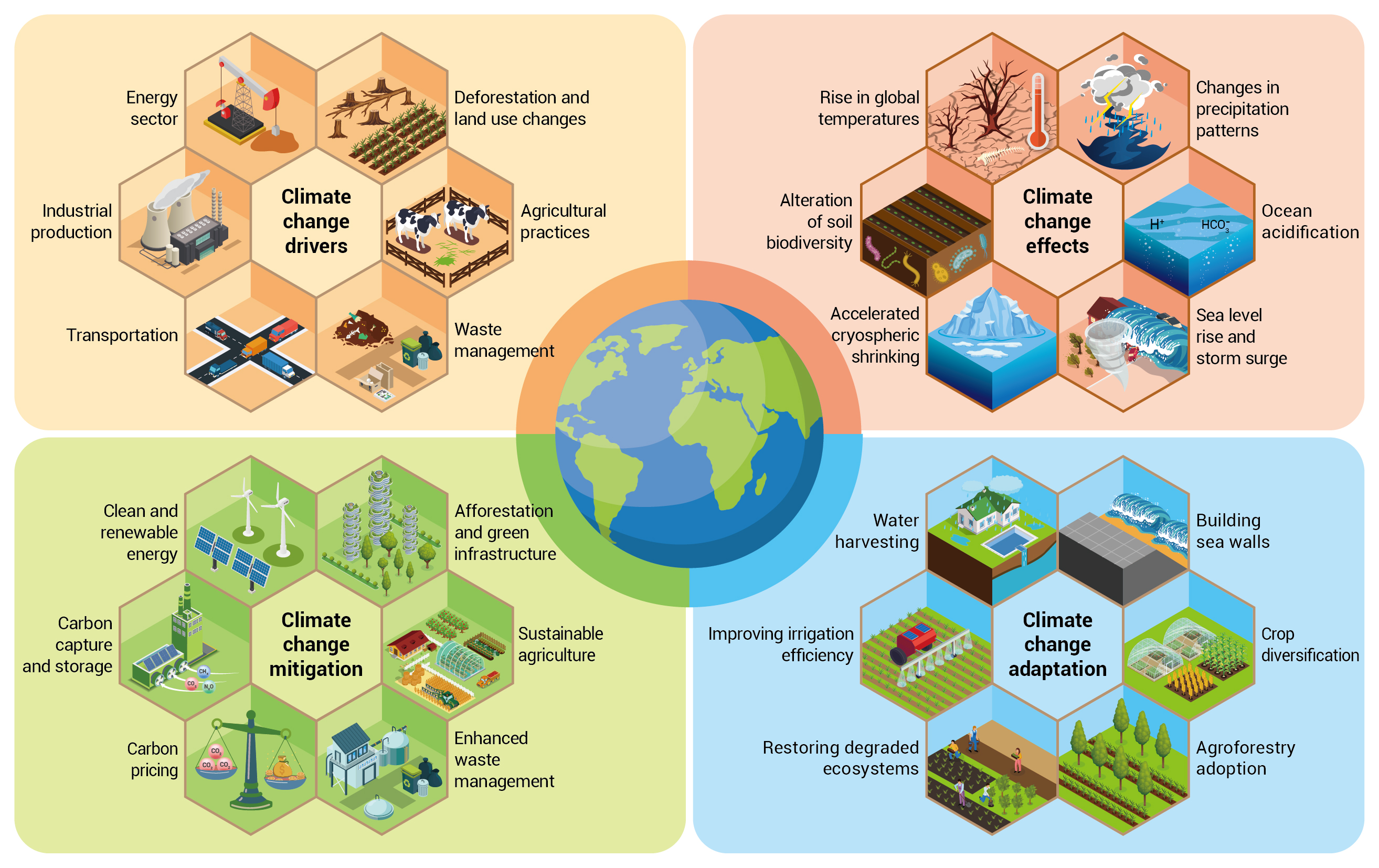Trump’s FEMA cuts leave flood-prone communities without early warning systems – ehn.org

Federal Policy Shift on Disaster Mitigation and its Conflict with Sustainable Development Goals
Executive Summary
Recent administrative actions have resulted in the scaling back of key Federal Emergency Management Agency (FEMA) programs designed for flood prevention and disaster resilience. This policy change directly impedes progress toward several United Nations Sustainable Development Goals (SDGs), particularly those concerning sustainable cities, climate action, and poverty reduction. The cancellation of federal grants has forced numerous flood-prone communities to abandon or postpone critical infrastructure projects, thereby increasing their vulnerability to climate-related disasters.
Impact on SDG 11: Sustainable Cities and Communities
Undermining Disaster Risk Reduction (Target 11.5)
The administration’s decision to retract funding for disaster mitigation directly contravenes SDG Target 11.5, which aims to significantly reduce deaths, affected populations, and economic losses from disasters. By halting funding, the federal government has compromised the ability of local communities to protect vulnerable residents.
- Program Cancellations: Key initiatives such as FEMA’s Building Resilient Infrastructure and Communities (BRIC) and the Flood Mitigation Assistance program have been curtailed.
- Project Abandonment: Consequently, cities that had secured federal grants were forced to cancel essential projects. Notable examples include:
- Norman, Oklahoma: A planned automated flood sensor and early-warning system was scrapped.
- Central, Louisiana: Flood buyout initiatives were halted.
- Scranton, Pennsylvania: Critical infrastructure upgrades to prevent future flooding were delayed indefinitely.
- Increased Vulnerability: Without these federally funded projects, communities lack the necessary tools to mitigate the increasingly severe impacts of flooding, leaving residents and local economies exposed.
Setbacks for SDG 13: Climate Action
Weakened Resilience to Climate-Related Hazards (Target 13.1)
SDG Target 13.1 calls for strengthening resilience and adaptive capacity to climate-related hazards. The policy shift represents a significant setback for national climate adaptation efforts, as floods are the most frequent and costly natural disasters in the United States, with their intensity growing due to climate change.
- The defunded programs were instrumental in helping communities build adaptive capacity through infrastructure that could withstand extreme weather events.
- The revocation of rules requiring essential public buildings to be rebuilt with flood-resistant designs further weakens long-term resilience against predictable climate hazards.
Broader Implications for Sustainable Development
Compromised Infrastructure and Increased Inequality (SDG 1, SDG 9)
The funding cuts have wider implications, affecting goals related to poverty, inequality, and infrastructure.
- SDG 1 (No Poverty): Target 1.5 focuses on building the resilience of the poor and vulnerable to climate-related events. The lack of funding for early-warning systems and mitigation projects disproportionately harms low-income households, which often reside in high-risk areas and lack the resources to recover from disasters.
- SDG 9 (Industry, Innovation and Infrastructure): Target 9.1 aims to develop quality, reliable, and resilient infrastructure. The cancellation of grants prevents the construction and upgrading of infrastructure necessary to protect communities, thereby undermining efforts to build a resilient national foundation.
Conclusion and Legislative Response
The administrative rollback of FEMA’s disaster mitigation funding directly conflicts with the principles of sustainable development by increasing community vulnerability, weakening climate resilience, and failing to protect at-risk populations. The policy undermines the federal government’s role in prioritizing disaster readiness in an era of increasing climate volatility. In response, a bipartisan coalition of lawmakers from affected states has introduced legislation aimed at reinstating this critical funding, reflecting a legislative push to realign national policy with the objectives of disaster risk reduction and sustainable, resilient development.
Analysis of Sustainable Development Goals (SDGs) in the Article
1. Which SDGs are addressed or connected to the issues highlighted in the article?
- SDG 1: No Poverty
- SDG 9: Industry, Innovation and Infrastructure
- SDG 11: Sustainable Cities and Communities
- SDG 13: Climate Action
2. What specific targets under those SDGs can be identified based on the article’s content?
-
SDG 1: No Poverty
- Target 1.5: Build the resilience of the poor and those in vulnerable situations and reduce their exposure and vulnerability to climate-related extreme events and other economic, social and environmental shocks and disasters.
Explanation: The article highlights that the cancellation of federal funding leaves “vulnerable residents unprotected during extreme weather.” This directly relates to the target of building resilience for vulnerable populations against climate-related disasters like floods.
- Target 1.5: Build the resilience of the poor and those in vulnerable situations and reduce their exposure and vulnerability to climate-related extreme events and other economic, social and environmental shocks and disasters.
-
SDG 9: Industry, Innovation and Infrastructure
- Target 9.1: Develop quality, reliable, sustainable and resilient infrastructure… to support economic development and human well-being.
Explanation: The article discusses the cancellation of “critical infrastructure projects” and “infrastructure upgrades” aimed at flood prevention. It also mentions that FEMA revoked rules requiring “essential buildings to be rebuilt with flood-resistant designs,” which speaks directly to the goal of developing resilient infrastructure.
- Target 9.1: Develop quality, reliable, sustainable and resilient infrastructure… to support economic development and human well-being.
-
SDG 11: Sustainable Cities and Communities
- Target 11.5: Significantly reduce the number of deaths and the number of people affected and… decrease the direct economic losses… caused by disasters, including water-related disasters.
Explanation: The article focuses on floods, which it calls the “most common and costly natural disasters.” It emphasizes that early warning systems are “among the most effective tools for reducing fatalities,” directly aligning with the goal of reducing deaths and economic losses from disasters. - Target 11.b: Substantially increase the number of cities and human settlements adopting and implementing integrated policies and plans towards… mitigation and adaptation to climate change, disaster risk reduction.
Explanation: The FEMA programs mentioned (BRIC and Flood Mitigation Assistance) are federal mechanisms that support cities in implementing disaster risk reduction plans. The article notes that cities like Norman, Oklahoma, and Scranton, Pennsylvania, had to “scrap projects intended to prevent future flooding” after these grants were canceled, indicating a setback for this target.
- Target 11.5: Significantly reduce the number of deaths and the number of people affected and… decrease the direct economic losses… caused by disasters, including water-related disasters.
-
SDG 13: Climate Action
- Target 13.1: Strengthen resilience and adaptive capacity to climate-related hazards and natural disasters in all countries.
Explanation: The article explicitly links the increasing frequency of floods to “climate change” and discusses disaster readiness in an “era of increasingly volatile storms.” The entire focus on scaling back flood prevention and disaster resilience programs is a direct commentary on the nation’s adaptive capacity to climate-related hazards.
- Target 13.1: Strengthen resilience and adaptive capacity to climate-related hazards and natural disasters in all countries.
3. Are there any indicators mentioned or implied in the article that can be used to measure progress towards the identified targets?
-
For Targets 11.b and 13.1
- Indicator: Availability of national disaster mitigation funding.
Explanation: The article explicitly mentions the cancellation of “disaster mitigation grants, including FEMA’s BRIC and Flood Mitigation Assistance programs.” The availability and disbursement of such funds are direct measures of national strategy for disaster risk reduction. - Indicator: Number of communities with implemented disaster risk reduction projects.
Explanation: The article states that cities had to “cancel or delay critical infrastructure projects” such as “early-warning systems, flood buyouts, and infrastructure upgrades.” Tracking the number of such implemented projects would measure progress. The quote from Norman, Oklahoma, about not having an “automated system” points to a failure in implementing such a project.
- Indicator: Availability of national disaster mitigation funding.
-
For Target 11.5
- Indicator: Number of deaths caused by disasters.
Explanation: The article implies this indicator by stating that early warning systems are “effective tools for reducing fatalities.” A lack of these systems could lead to an increase in fatalities, which is a key metric for this target. - Indicator: Direct economic losses from disasters.
Explanation: The article states that floods are the “most costly natural disasters in the United States.” This directly points to economic loss as a key measure of disaster impact.
- Indicator: Number of deaths caused by disasters.
-
For Target 9.1
- Indicator: Adoption of resilient building standards.
Explanation: The article mentions that “FEMA has also revoked rules requiring essential buildings to be rebuilt with flood-resistant designs.” The existence and enforcement of such rules are a clear indicator of progress toward resilient infrastructure.
- Indicator: Adoption of resilient building standards.
4. Summary Table of SDGs, Targets, and Indicators
| SDGs | Targets | Indicators Identified in the Article |
|---|---|---|
| SDG 1: No Poverty | 1.5: Build the resilience of the poor and those in vulnerable situations and reduce their exposure and vulnerability to climate-related extreme events. | Protection status of vulnerable residents during extreme weather. |
| SDG 9: Industry, Innovation and Infrastructure | 9.1: Develop quality, reliable, sustainable and resilient infrastructure. |
|
| SDG 11: Sustainable Cities and Communities | 11.5: Significantly reduce the number of deaths, people affected, and economic losses from disasters. |
|
| 11.b: Increase cities adopting and implementing plans for disaster risk reduction. |
|
|
| SDG 13: Climate Action | 13.1: Strengthen resilience and adaptive capacity to climate-related hazards and natural disasters. |
|
Source: ehn.org

What is Your Reaction?
 Like
0
Like
0
 Dislike
0
Dislike
0
 Love
0
Love
0
 Funny
0
Funny
0
 Angry
0
Angry
0
 Sad
0
Sad
0
 Wow
0
Wow
0





































































.jpg?#)









